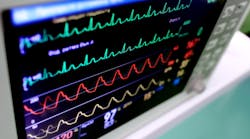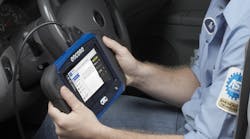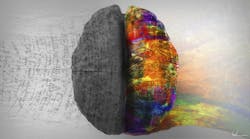Why do trained technicians misdiagnose? If you can’t see what is happening and your tools/equipment are only taking samples, aren’t you guessing?
Technicians use scan tools that only snapshot faults in milliseconds (a thousandth of a second). Intermittent failures can happen much faster and cause issues that will not send a fault code.
Using the correct tools can help a technician see faults that happen extremely fast, and can even see into the future and determine if a part is failing before it shows a symptom. Using the correct tool can change a very difficult diagnosis into a routine repair.
For as long as I can remember, we have had drivers, customers and/or service advisories say or write: “It only does it sometimes,” or “It’s not all the time” or “It comes and goes,” and with that we believe the problem is “intermittent.”
As technicians, we now must find and repair the “intermittent fault.” As technology and systems become more sophisticated, and we add more processors and increase the speed in which information flows, we’re seeing more and more “intermittent” issues every day. We try to gather as much information as possible from the customer to at least try to determine a place to start or to reproduce the concern. When there are no lights on the dash and no codes in the system the issue is compounded.
The Problem
Are these problems truly intermittent or are the tools and equipment we’re using not able to keep up with the system or systems we’re trying to diagnose and repair? For example, how fast can you count to 1,000? It’ll take about five minutes. How fast can you count to one million? It takes about 14 days. How fast can you count to one billion? It would take you about 31 years.
How fast does your multimeter sample information? At about 1,000 readings per second, and for some expensive ones, about 4,000 per second. Your scan tool ranges from 100 to 1 millisecond fault snapshots.
How fast does an ECM and other modules move and process information? One million (microsecond) plus per second.
We must look at what it is we are trying to diagnose and determine if we have the right tools and the correct repair procedures to fix the vehicle. We already know that service information doesn’t always work. How many times have we used the process and procedures supplied by the manufacturers only to get to the end and the problem still exists?
Maybe it’s that we’re using tools that are slower than the systems we are trying to repair.
Parameters
It sometimes helps to understand the “enabling criteria” that is designed into the processors and modules and activates the lights on the dash.
What is enabling criteria? It’s the parameters, thresholds, ranges and/or information in which systems operate within the modules to correctly receive, send and control components and systems that keep everything working correctly.
When those parameters are not met, an indicator light comes on and/or a code is set off.
When we go to the doctor, he or she always checks our blood pressure, pulse, etc., using tools and processes to gather basic information. If something is wrong, or these items are out of their parameters, the doctor either brings in faster and more accurate equipment, or sends you to a specialist with the equipment and knowledge to interpret the information this faster equipment provides.
Some people have seen or have been hooked up to an electrocardiogram (EKG or ECG) machine. This machine requires a medical person to stick sensors on a person and hook wires to them. We can watch the different color squiggly lines move across the screen. After the test, the doctor explains what is possibly wrong or tells you that everything is good.
In basic terms, we refer to the EKG machine as an oscilloscope. In addition to medical facilities, we may have also seen oscilloscopes in computer labs or around folks that work on electronic devices or equipment.
Oscilloscopes measure live information or data; they do not sample information like other equipment we currently use to diagnose vehicle concerns. Oscilloscopes are built to gather live information at a rate faster than the system, or body organ, can transmit the information. This allows the person reading the information to see and know exactly what is happening, when it happens.
Speed
Think again about the speed at which a processor or module is moving information in trucks. We have to use the piece of equipment that will allow us to know what is happening at the time it happens.
Oscilloscopes that we use to train technicians at WheelTime University, for example, can read one billion (nanoseconds) pieces of information per second. These scopes are also inexpensive. The speed at which information flows, and the number of modules that share the information, make it more critical than ever that technicians know how to read, interpret and diagnose any faults or concerns that are presented to them.
Using a “scope” also reduces the time necessary to make traditional repairs and shortens normally lengthy procedures. For example, when diagnosing an engine in which you believe the cam timing is out, or if you’ve just rebuilt the engine and are second guessing if the cam timing is correct, you could pull down engine components in order to confirm if the timing is correct or not, and that would take hours of labor. Or, you could you use a scope and in 10 minutes or less confirm with 100 percent accuracy whether everything is correct.
For a couple examples of how a scope benefits troubleshooting and repair – from a technician who took the advanced diagnostics course offered by the Utah Trucking Association, using WheelTime University training – visit VehicleServicePros.com/20861539
Just as a cardiologist looks at a heart to determine such things as heart muscle condition, power of heart contraction and condition of heart valves and arteries, technicians use the oscilloscope to see if injectors are going bad or if a lift pump may cause problems in the future and so on.
Technology will only make trucks more complex and increase speeds in communication. All the systems that can and will be added to a truck after the fact will continue to grow, and we need to know what the truck is seeing and the quality of the information it’s using to make decisions in order to reduce downtime, cost of repairs and replacement of unnecessary parts.
George Arrants is director of training and recruitment for the WheelTime Network (www.wheeltime.com), North America’s largest dedicated service and parts network for quality truck and coach care, and its WheelTime University (WTU). WTU provides assessments, training and ASE (Automotive Service Excellence) test preparation for WheelTime member technicians and fleets that may not have their own training program. As an Automotive Education Consultant specializing in National Automotive Technicians Education Foundation (NATEF)/ASE Accreditation, Arrants works with instructors and administrators to develop partnerships with local business and industry through program advisory committees. These committees help schools establish, develop and maintain programs that are relevant to the needs of automotive, medium and heavy duty and collision industries and the community. He chairs the Technology and Maintenance Council’s TMCSuperTech – the National Technician Skills Competition – and the TMCFutureTech – the National Student Technician Competition. His entire career has been in the automotive service and education industries.






